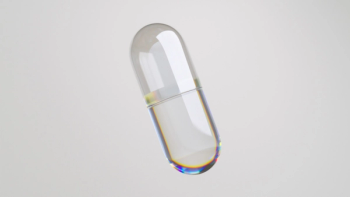
Tablet and Capsule Colors: Multifunctional Purpose
Capsule colors enable brands to communicate and connect with consumers.
Capsule colors offer a kaleidoscope of marketing benefits. From branding to product differentiation, and even greater ease of use, capsule colors can create a vibrant sales edge for supplement delivery.
Natural Colors
The latest trend in demand is for natural colorants. These natural colorants appeal to the growing number of consumers that have gone au naturel, buying preservative-free foods, clean-label clothes, and fruit- and vegetable-based beauty products. In the last several years, this booming healthy lifestyle market has also embraced preservative-free, gluten-free, binder-free, and GMO-free capsules for supplement delivery. Natural colorants for capsules also allow marketers to tout “no artificial color” product claims.
For instance, Capsugel’s Razzberry or Candy Apple colors come from carmine derived from cochineal extract. The orange-yellow compound riboflavin can make lemon drop colors or beautiful carrot colors when combined with carmine. Green pigment chlorophyll can be sourced from alfalfa and mulberry leaves. Shea butter comes from hues of caramel, or heat-treated sugar.
Finishing School
To make colors pop further, shines and color enhancements using natural sources can be added. (These can also be added even if color is not used.) Titanium dioxide (TiO2), a naturally mined mineral, can affect opacity. The trademarked ingredient Candurin, made of light-reflecting pigment composed of natural mica and TiO2, adds pearlescence.
Pearlescent finishes lend flash to certain markets. For the sports nutrition market, think shimmery, heavy silver; for the cosmeceutical market, consider shiny blues or roses-or even pearlescent, two-toned black and white for the ultimate in chic presentation.
Adding Value
In these markets and others, colors-whether natural or FD&C, opaque, or pearlescent-can be matched to brand image and packaging for further branding and product differentiation. For example, a sleep product can be encased in mint green colors and bottles or boxes for an overall soothing, calming presentation. Capsules targeting high-energy sports nutrition could carry strong colors like silver, black, red, or yellow.
While there are cultural differences tied to colors, in general people tend to experience color in the same way. In a study by Hersberger and Hatebur, for example, yellow, red, and light blue were found to stimulate, while brown and purple were perceived as inhibiting. Pink and brown were perceived as calming, while red was stimulating. White, yellow, and light blue had a relaxing effect on respiratory function, while dark blue and brown were perceived as “tightening.”1
Colors can also be functional. Research shows that color is the primary way patients identify their medication (100%), even more than the name of the product (91%), the dosage form (84%), the shape (66%), or the size (39%).1
Color Selection
For help choosing the best colors for specific needs, marketers and manufacturers can experiment with an online capsule color selection tool. Just as paint colors and combination options can be visualized on a computer at home-improvement stores, a tool for capsule color selection allows users to design individual capsules in various colors and try out color combinations with packaging ideas. Check with your capsule provider.
Also:
Missy Lowery is marketing manager for capsules specialist Capsugel (Greenwood, SC). Capsugel offers its own color selection tool for capsules on its website at
Reference
1. Hersberger J and Hatebur S, “Differentiation between and preference for colours and colour combinations of hard gelatin capsules by the elderly,” University of Basel, Institute of Physiology.
Newsletter
From ingredient science to consumer trends, get the intel you need to stay competitive in the nutrition space—subscribe now to Nutritional Outlook.





